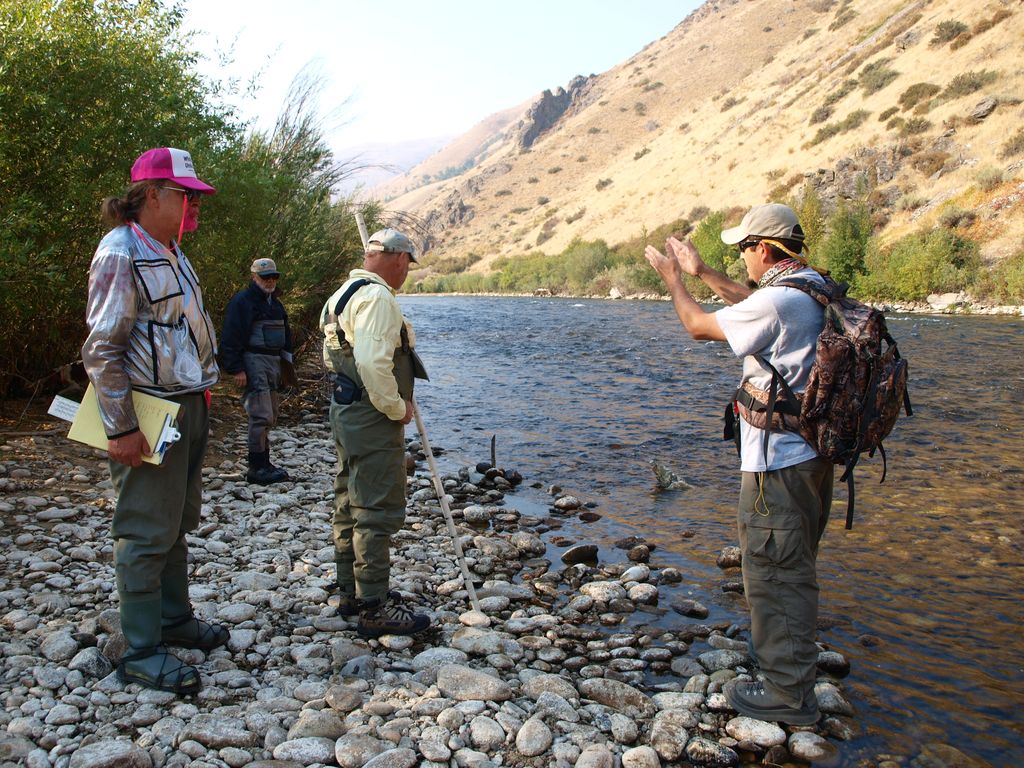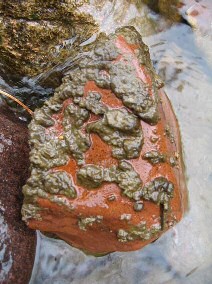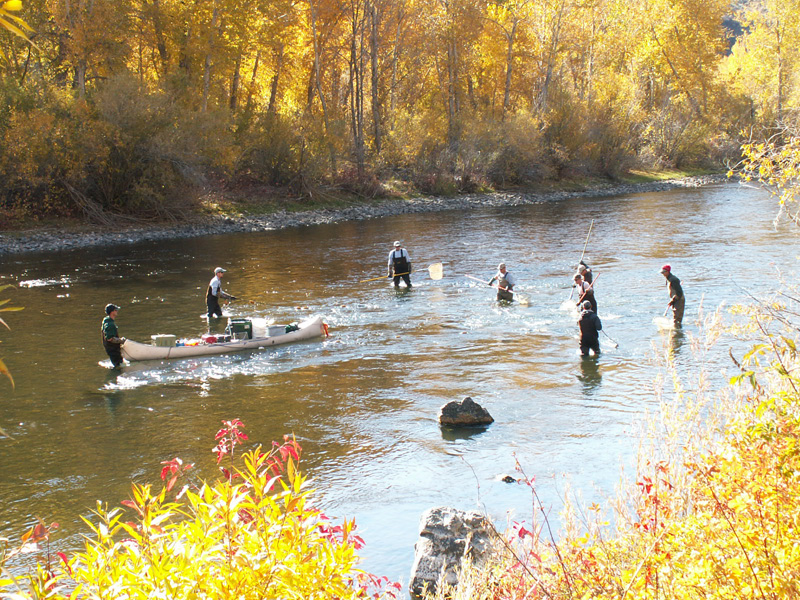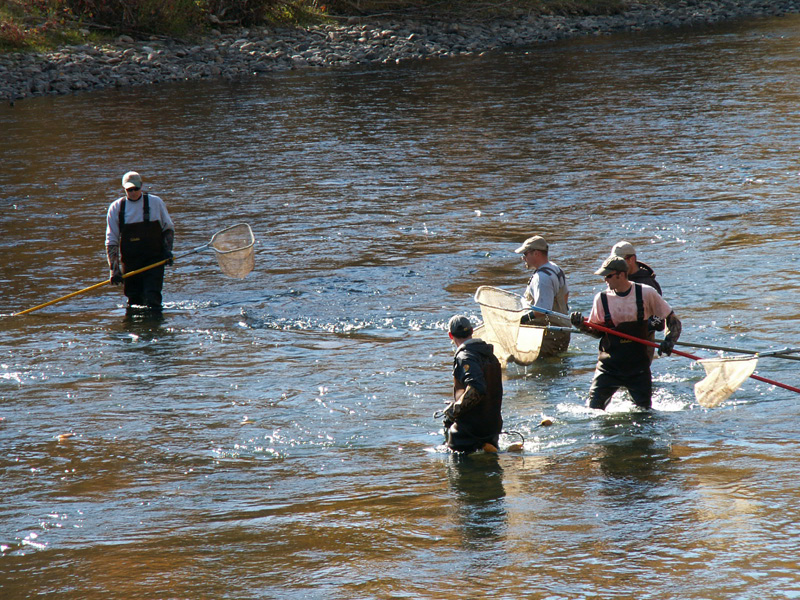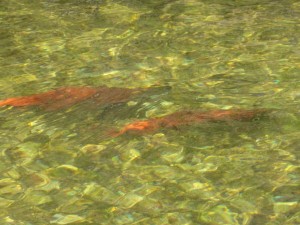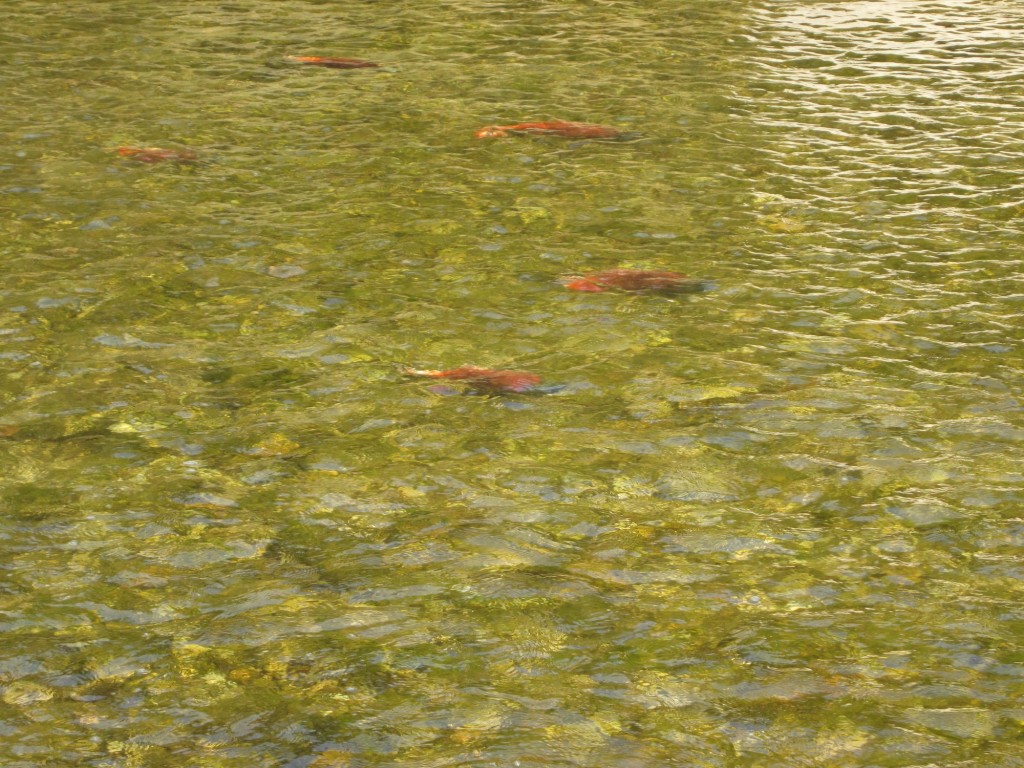In addition to the population survey that Idaho Fish and Game conducts every three years on the South Fork Boise River, there is also an effort to track the status of trout fry in several locations along the South Fork Boise River.
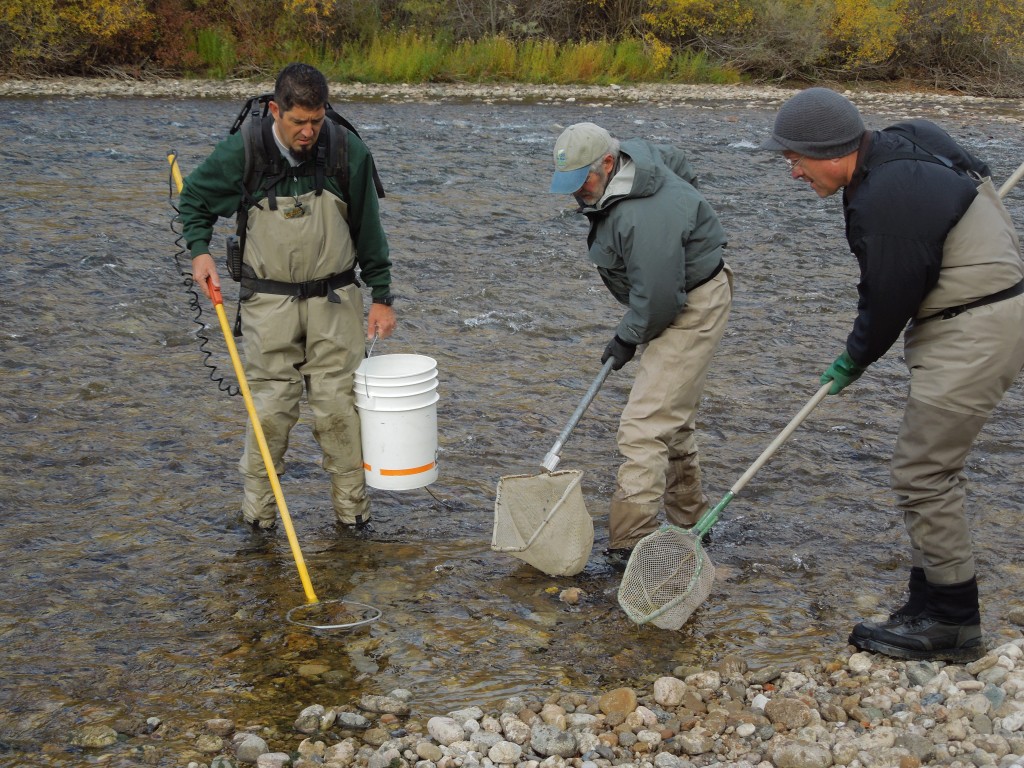
In late October a small crew was led by Art Butts from Idaho Fish and Game along with volunteers from Boise Valley Fly Fishers and the Ted Trueblood Chapter of Trout Unlimited. They monitored trout fry in six locations spread a few miles apart.
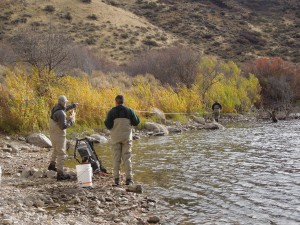
A section of the river would be measured for a 33 meter transect. The photo at left shows a portion of the river right (we are looking upstream so it’s on your left in the photo) portion of the South Fork just upstream of the confluence with Rough Creek. This is just upstream of the slide area where a January 1996 landslide formed a backwater along the South Fork.
Since Art was the guy who knows what he is doing with electricity he manned the backpack electroshocking unit. The three volunteers handled the nets, and as fry would emerge from the river bottom they would be netted and put in the five-gallon bucket. The larger photo above shows the method.
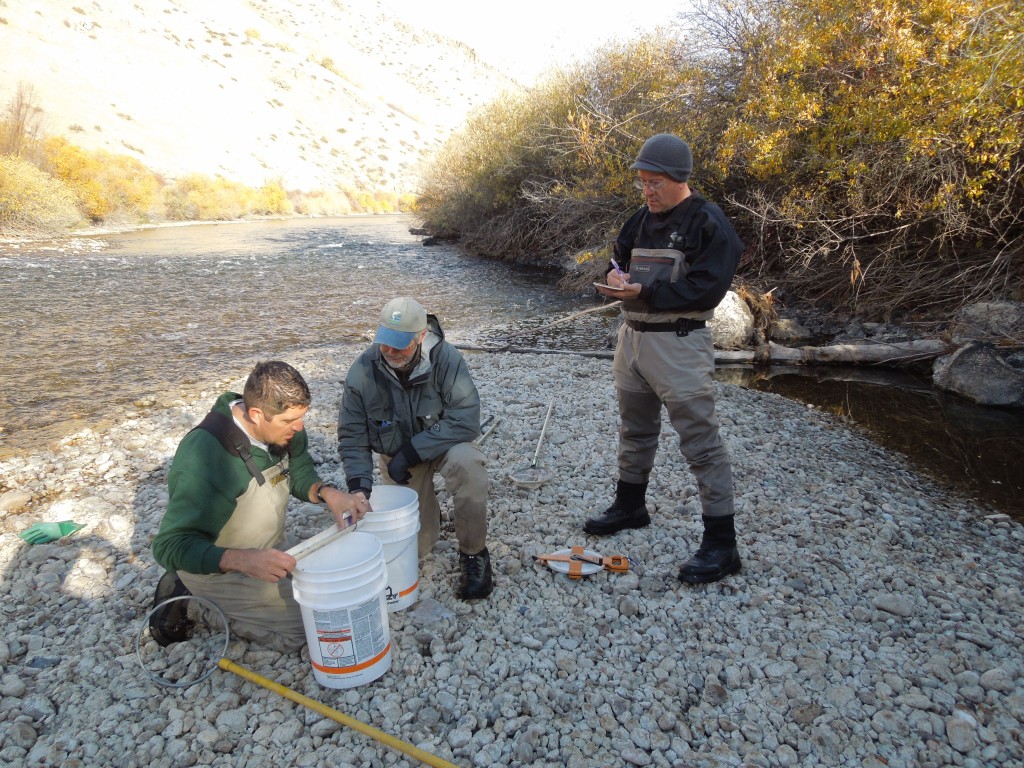
The next step in the process was counting and measuring each of the trout that had been netted and put in the bucket.
Each trout was counted and measured with a ruler. Total numbers are each site were recorded as were the measurements of all the fry.
The age zero trout were then put in the second bucket (both buckets held water of course) so they could avoid double counting or losing track of the number of fish.
This process was repeated for a total of six different sites. The data collected at these sites match up with previous fry monitoring activities in years past.
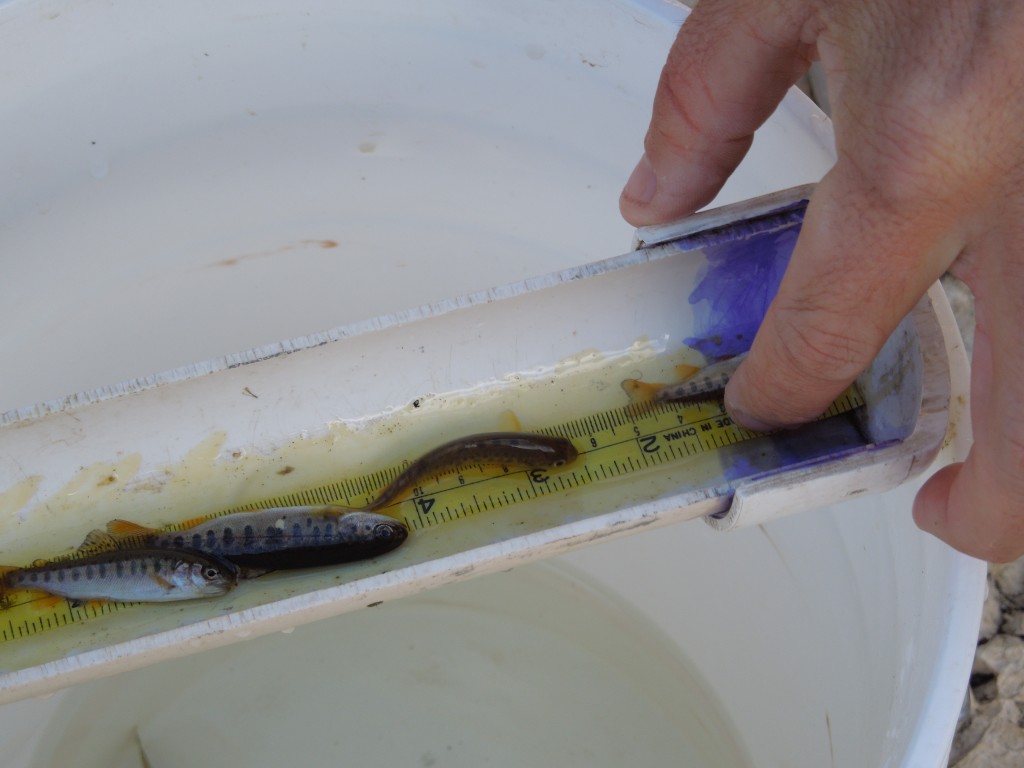
Over time we hope to get a better sense of the juvenile fish populations in the South Fork Boise River and what issues they face with flow and habitat management along the river.
As lay people we were interested to see these fry are in very shallow water and for the most part on or in and among the interstices of the rocks on the bottom of the channel. And they were right along the bank or shoreline. In places where there was better brush cover along the bank there appeared to be more dense numbers of these little fish. The more open areas seemed to have fewer fish.
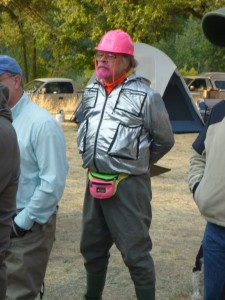 For the year 2012 southforkboise.org salutes Whitefish Ed for his devotion to the South Fork Boise River fishery and his early work to call attention to the stranding of young of year trout when the river flows are abruptly reduced in late summer. Previous posts have reported the details here about the concern that changes in flows could be affecting survival of juvenile trout, and then the follow up study where anglers and agency biologists worked together to assess the effects. Information on the results of the work is forthcoming in 2013 but for now let’s tip the hat to Whitefish Ed who initially called attention to this concern and inspired others to get the ball rolling on a study.
For the year 2012 southforkboise.org salutes Whitefish Ed for his devotion to the South Fork Boise River fishery and his early work to call attention to the stranding of young of year trout when the river flows are abruptly reduced in late summer. Previous posts have reported the details here about the concern that changes in flows could be affecting survival of juvenile trout, and then the follow up study where anglers and agency biologists worked together to assess the effects. Information on the results of the work is forthcoming in 2013 but for now let’s tip the hat to Whitefish Ed who initially called attention to this concern and inspired others to get the ball rolling on a study.